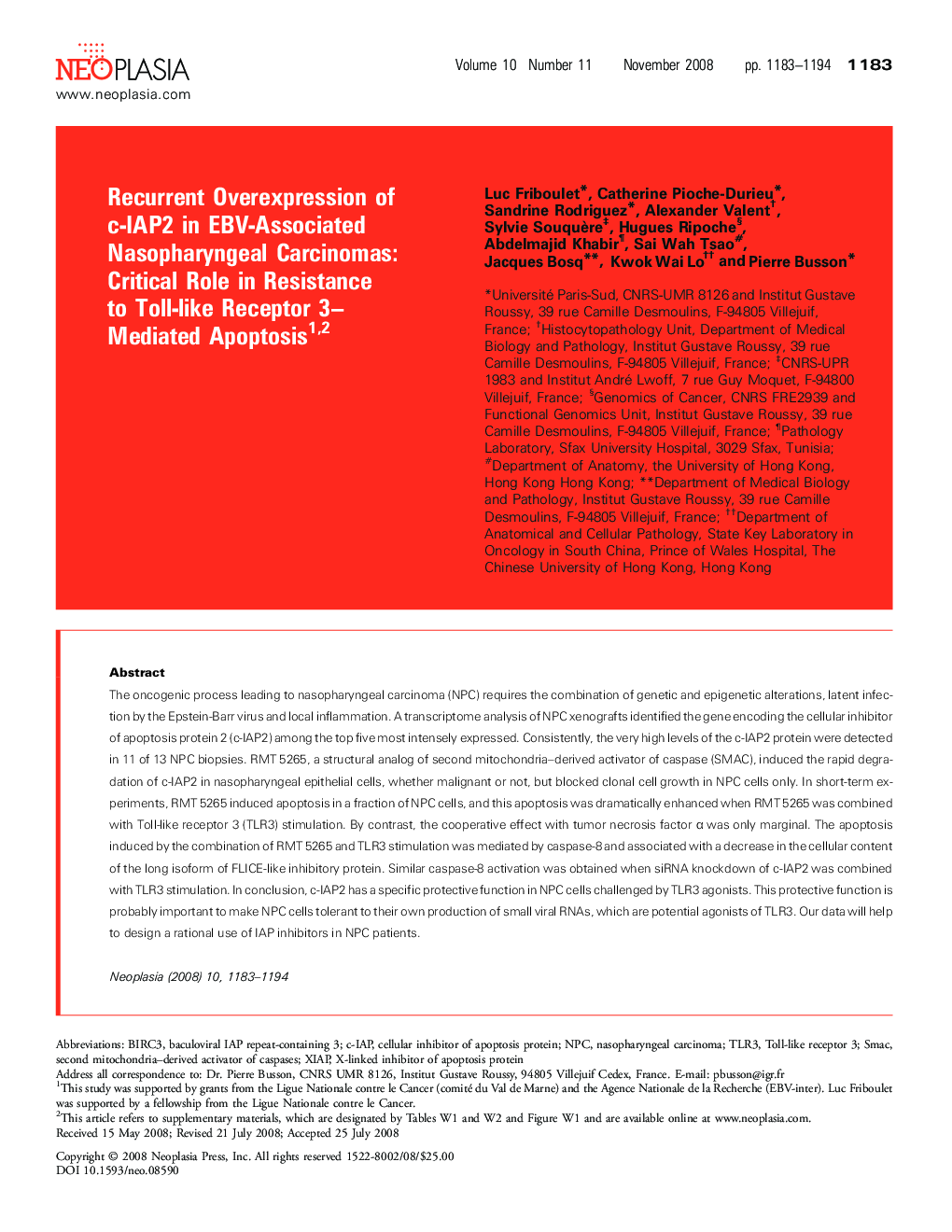| کد مقاله | کد نشریه | سال انتشار | مقاله انگلیسی | نسخه تمام متن |
|---|---|---|---|---|
| 2152042 | 1090041 | 2008 | 1188 صفحه PDF | دانلود رایگان |

The oncogenic process leading to nasopharyngeal carcinoma (NPC) requires the combination of genetic and epigenetic alterations, latent infection by the Epstein-Barr virus and local inflammation. A transcriptome analysis of NPC xenografts identified the gene encoding the cellular inhibitor of apoptosis protein 2 (c-IAP2) among the top five most intensely expressed. Consistently, the very high levels of the c-IAP2 protein were detected in 11 of 13 NPC biopsies. RMT 5265, a structural analog of second mitochondria-derived activator of caspase (SMAC), induced the rapid degradation of c-IAP2 in nasopharyngeal epithelial cells, whether malignant or not, but blocked clonal cell growth in NPC cells only. In short-term experiments, RMT 5265 induced apoptosis in a fraction of NPC cells, and this apoptosis was dramatically enhanced when RMT 5265 was combined with Toll-like receptor 3 (TLR3) stimulation. By contrast, the cooperative effect with tumor necrosis factor α was only marginal. The apoptosis induced by the combination of RMT 5265 and TLR3 stimulation was mediated by caspase-8 and associated with a decrease in the cellular content of the long isoform of FLICE-like inhibitory protein. Similar caspase-8 activation was obtained when siRNA knockdown of c-IAP2 was combined with TLR3 stimulation. In conclusion, c-IAP2 has a specific protective function in NPC cells challenged by TLR3 agonists. This protective function is probably important to make NPC cells tolerant to their own production of small viral RNAs, which are potential agonists of TLR3. Our data will help to design a rational use of IAP inhibitors in NPC patients.
Journal: Neoplasia - Volume 10, Issue 11, November 2008, Pages 1183, Pages IN7-1194